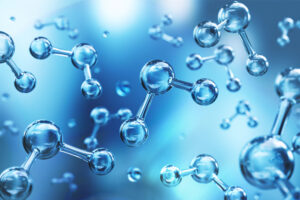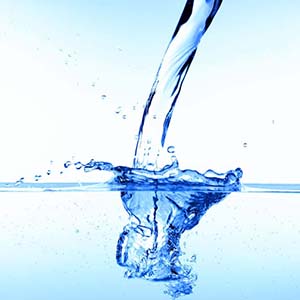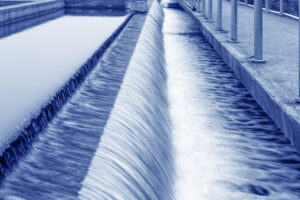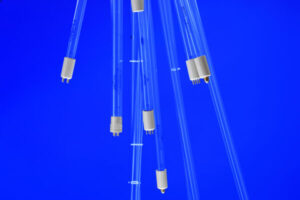 UV water disinfection is employed in both residential and commercial settings to ensure the safety of water by mitigating the risk of contamination. Utilizing UV water disinfection systems offers numerous advantages and has been proven to effectively eliminate 99.99% of harmful microorganisms under the proper conditions.
UV water disinfection is employed in both residential and commercial settings to ensure the safety of water by mitigating the risk of contamination. Utilizing UV water disinfection systems offers numerous advantages and has been proven to effectively eliminate 99.99% of harmful microorganisms under the proper conditions.
Quality UVC Lamps are Key to Achieving Maximum Disinfection
There are many benefits of UV water disinfection, and using high-quality UVC germicidal lamps is key to achieving maximum effectiveness. Homeowners seek the assurance of safe drinking water, while business owners bear the responsibility of delivering clean water in their establishments. UV technology presents an efficient and cost-effective means of ensuring safe and potable water, accompanied by a multitude of benefits when compared to alternative methods.
To maximize the value of UV disinfection, it is crucial to choose high-quality UVC lamps from a reputable manufacturer tailored to the specific requirements of your application.
 Advantages of UV Water Disinfection
Advantages of UV Water Disinfection
UV water disinfection boasts a wide array of benefits and finds applications in various water treatment scenarios, including municipal drinking water treatment plants, aquaculture, and water reclamation. UV water disinfection provides many advantages, including:
- Highly Effective: Proven to eliminate 99.99% of harmful microorganisms.
- Broad-Spectrum Efficacy: UV radiation can eliminate bacteria such as Cryptosporidium and Giardia, which are resistant to chlorine and known to cause illnesses.
- Safety: Chemical-free with no harmful byproducts.
- Environmental Friendliness: A safe and sustainable alternative to chlorine.
- Reliability: UV lamps operate continuously, requiring minimal maintenance, primarily involving periodic lamp replacements, such as annually, making UV water disinfection highly cost-effective.
- Energy Efficiency: Selecting the appropriate UVC germicidal lamp for your application ensures maximum energy efficiency.
- Instant Results: UV radiation promptly eradicates harmful microorganisms with quick exposure.
- Tasteless and Odorless: Unlike chlorine treatments, UV disinfection systems do not alter the taste or odor of water.
Limitations of UV Water Disinfection
While the list of benefits is extensive, there are certain limitations in specific water treatment applications.
- UV disinfection does not remove heavy metals and other substances: UV radiation effectively eliminates microorganisms like bacteria and viruses but does not remove chlorine, salt, heavy metals, or synthetic substances like pharmaceuticals. Combining additional water filtration methods with UV treatment ensures the removal of these substances.
- UV light can be obstructed by particles: murky water can pose challenges, as foreign particles can obstruct UV radiation. Hence, a filtration method before UV exposure ensures optimal water disinfection. Ozone lamps for water disinfection can help to overcome challenges with obstruction of direct UV exposure.
The multitude of advantages of UV water disinfection far outweigh any potential drawbacks and should be carefully considered when contemplating UV water treatment systems. Residential systems may be installed at the point of entry to the house or directly at the tap, while commercial systems may include larger units to accommodate higher demand. Whether employed in residential or commercial settings to promote health and wellness, UV water disinfection has a proven track record in eliminating a wide range of harmful microorganisms. *UVC water disinfection systems should be installed by a professional to avoid the potential hazards of UVC radiation exposure.
How UV Light Facilitates Water Disinfection
UV light, a component of natural sunlight responsible for causing sunburn, lies outside the visible spectrum of light and is invisible to the human eye. UV light is a form of energy positioned on the electromagnetic spectrum between visible light and X-rays. UV light is categorized into wavelengths measured in nanometers (nm) and is classified into three primary bands: UVA, UVB, and UVC.
Unlike UVA and UVB rays, which can penetrate the Earth’s atmosphere and cause sunburn, UVC is entirely absorbed by the ozone layer. UVC lamps are designed to replicate the specific wavelength necessary for UVC radiation to effectively eliminate germs in various applications.
- UVA (315-400 nm): The most common and dangerous UV ray from the sun, capable of penetrating the skin down to the middle layer.
- UVB (280-315 nm): With a shorter wavelength than UVA, UVB rays can only penetrate the skin’s top layer. Some UVB rays are blocked by the Earth’s ozone layer, and treated glass can also provide protection.
- UVC (100-280 nm): All UVC rays from the sun are absorbed by the ozone layer and never reach the surface of the Earth. Human exposure to UVC is primarily from artificial sources like UVC lamps, lasers or welding torches.
UVC light with a wavelength of around 254 nm is the most effective at neutralizing harmful contaminants. UVC light has been proven to eliminate a wide range of harmful contaminants and microorganisms, including:
- Bacteria
- Viruses
- Coliform
- Cysts
- Salmonella
- Cryptosporidium
- E-Coli
- Giardia
- Flu
- Infectious Hepatitis
- Polio
- Typhoid fever
- Cholera
- Dysentery
- Meningitis
 UV Lamp Supplier of Effective UVC Lamps
UV Lamp Supplier of Effective UVC Lamps
Germicidal UVC lamps used in water disinfection systems emit UV light at the most effective nanometer range for your specific application. Reputable UV germicidal lamp suppliers offer a variety of lamp design and engineering options, as well as custom solutions for challenging configurations. Collaborating with an experienced UV lamp supplier like LightSources ensures that your UV lamps deliver optimal disinfection with maximum energy efficiency, resulting in cost savings.
LightSources: Your Source for Germicidal Lamps for UV Water Disinfection
LightSources is a leading global provider of UVC germicidal lamps designed for use in UV water disinfection systems. We offer proven germicidal solutions for air, surface, and water disinfection. LightSources is renowned for its expertise in lamp design, engineering, and the manufacture of high-performance, energy-efficient lamp products.
We provide a wide selection of standard germicidal lamps and can develop custom solutions with skilled engineers who possess a deep understanding of UV radiation and lamp design. LightSources also offers expert prototype development and proprietary solutions to enhance your brand and market presence.
Our UV germicidal lamps include:
- Low-Pressure UVC Germicidal Lamps
- Low-Pressure Amalgam Germicidal Lamps
- Medium-Pressure Mercury Discharge Germicidal Lamps
- Far UVC Lamps
- Ozone Lamps
- Custom Quartz Sleeves and Electronic Ballasts
We offer custom engineering to meet your specifications, with lamps designed to fit in compact spaces, featuring a small footprint, or incorporating custom phosphor blends to suit your application needs.
Our germicidal lamps are deployed worldwide in a multitude of germicidal applications encompassing UV air, surface, and water disinfection.
LAMP PRODUCT DATA:
UV Germicidal LampsLAMP Applications:
UV Germicidal ApplicationsLightSources, in collaboration with its esteemed partner companies, represents the pinnacle of lamp design and high-tech manufacturing in the industry today. We provide UVC germicidal lamps that offer patent-protected, OEM-focused solutions. Reach out to us to consult with an engineer and explore our extensive selection of specialty, custom, and standard germicidal lamps tailored for UV water disinfection.
This post is also available in:
 Chinese (Simplified)
Chinese (Simplified)  Spanish
Spanish



